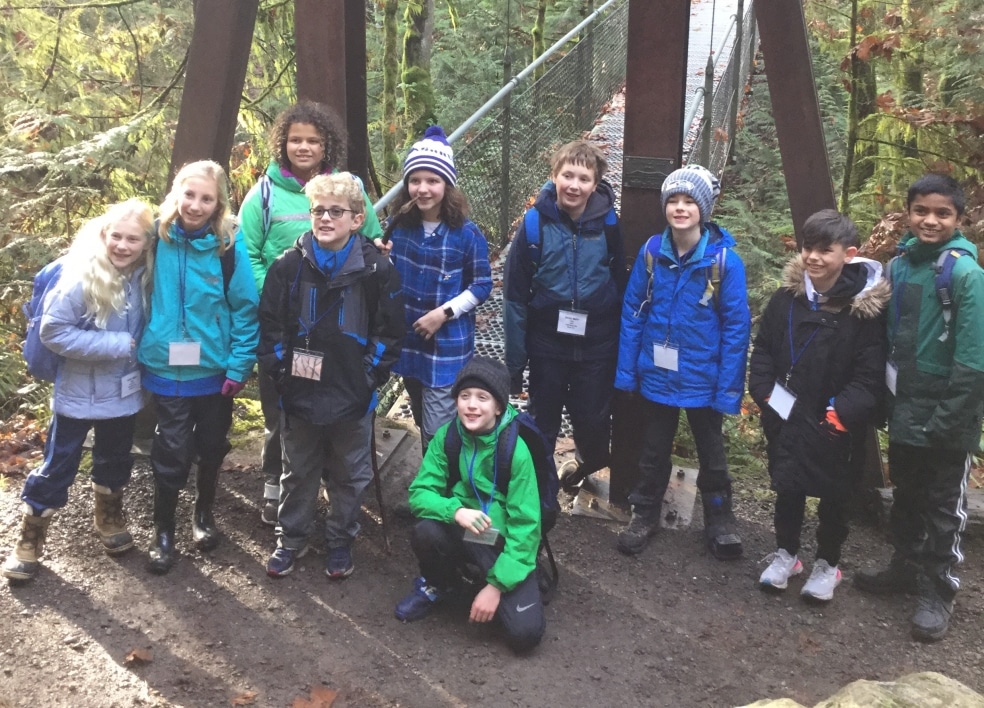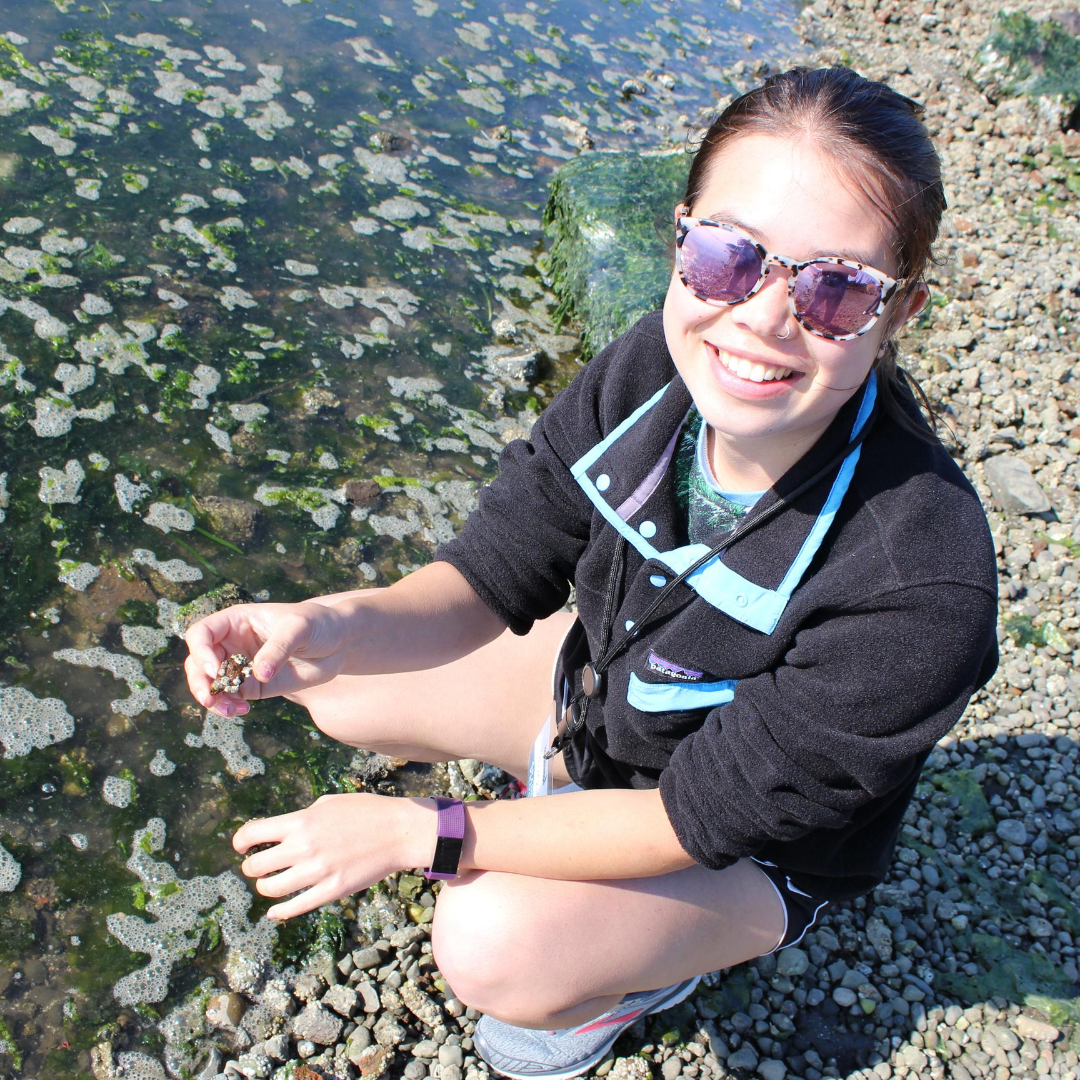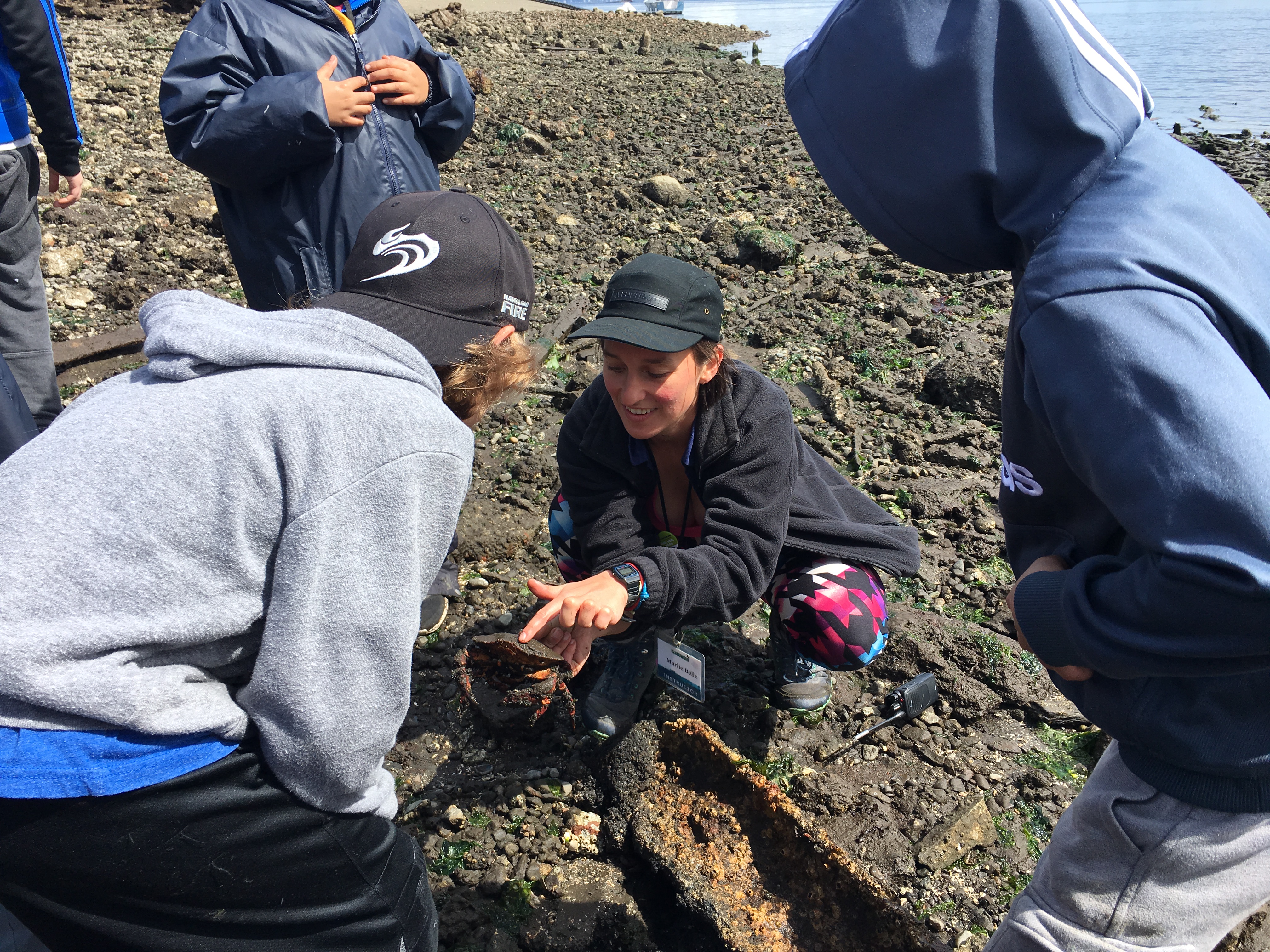For Morgan Malley, becoming a teacher has meant consciously moving from a traditional hierarchy, with…
Author: Julia Glassy
As a graduate student instructor for IslandWood’s School Overnight Program (SOP), I am outdoors all day long with students. Weather in Washington is pretty unpredictable and does not provide too many dry, warm days during the school year. Taking older elementary students outside to learn and explore is not always easy when it is rainy, gloomy, or windy, but there are some strategies that I use to help make the day go a little smoother and more fun for my group.
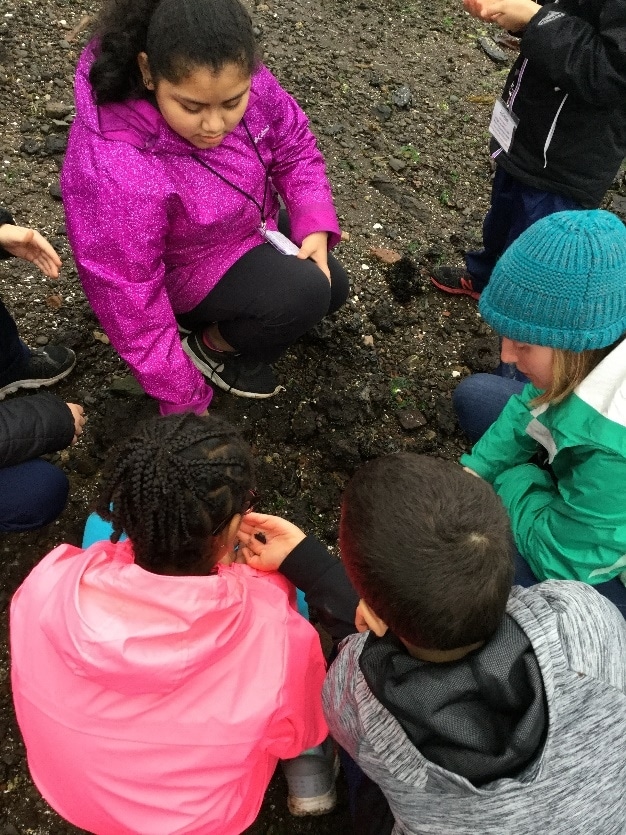
Graduate student Julia Glassy investigates the soil with School Overnight Program students.
Above all else, I keep in mind Maslow’s hierarchy of needs, which proposes that our most fundamental physical needs must be met before self-actualization can be achieved. If students are showing signs of needing food or rest, for example, then nothing else matters to them. Once they have a snack and a rest break, we move on with a lesson or activity.
Rain brings additional challenges, as students will want to feel warm and safe and be indoors if they are wet and cold. Fortunately, IslandWood’s gear library equips student with everything from hiking boots and rain pants to fleece jackets and gloves. IslandWood provides this gear for all students, in particular those who do not have the resources to meet this need for themselves. With everyone outfitted for the weather, hanging out in the rain is a little easier.
Layers and waterproof gear aside, young students are probably not too familiar with school taking place outdoors, especially when it is raining. How do I overcome the potential negative, slippery slope due to the rain? I make sure there is lots of movement in my teaching day. If we keep moving, then there is a higher chance the students will stay warm and ready to learn. I also incorporate a warm-up activity when we have been standing still for too long and when the students show me they are cold and want to go to their lodge. Also I provide breaks throughout the day for refueling when students rest, drink water, and enjoy a snack, as well as, have an indoor space for lunch to warm up. At IslandWood we have some long teaching days starting at 9:00 am and ending at 4:15 pm when the students get dropped off for lodge time before dinner. We then see them again after dinner for an evening program that is either outside, inside, or around a community campfire.
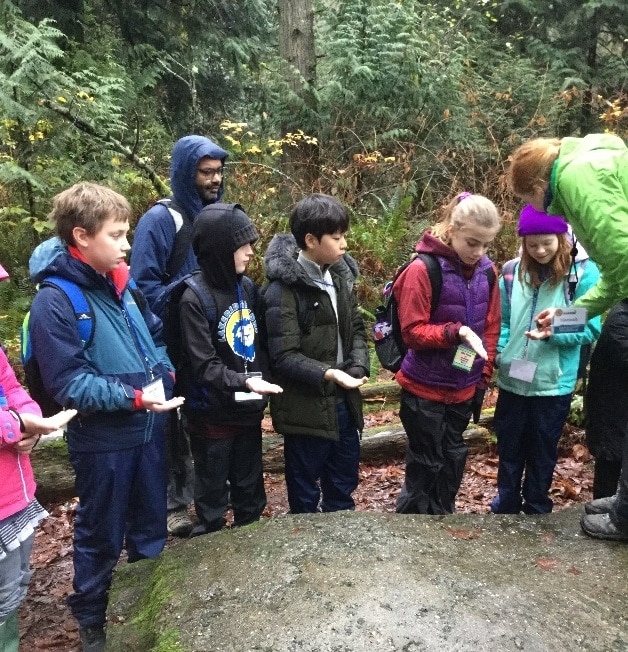
School Overnight Program students circle up with their hands out to examine an item in their instructor’s hand.
I love to incorporate rain into my lessons, which allows my students to gain a perspective and appreciation for all that rain provides to people and the environment around us. During the teaching week before winter break, a particularly rainy one, I did a watershed model activity with a fellow graduate student, Hannah Levy, in which students circled around a stone model of IslandWood’s Campus. The watershed model represents all the water and topographical components of IslandWood. First Hannah placed an X using chalk where “rain” should hit the model. Using food coloring, she dropped a few colored droplets near the X on the model and then asked the students to act as a rain cloud by pouring water from a small bucket directly on top of the X. Instructors and students got to watch as the water moved from the X, where it picked up the food coloring, and made its way down the hill toward the area of the model that represented Blakely Harbor. The rain from the sky allowed for water to continually hit the watershed model and show the constant movement of water.SOP student gathering around watershed model
The rain brought the watershed lesson to life. The students got to see the water cycle in action and how water moves through IslandWood’s campus. After the watershed activity, we trekked down to the harbor following a similar path as the water in the model. I did not think about it until after the week was finished, but I could have talked about seasonal changes here in Washington and the increase in rain during the winter and its influence on the environment, animals, and people. Next time…
As an outdoor educator, I worry about taking my students out in the rain sometimes, but I have to remind myself that rain can not only bring my lessons to life, it can be a source of fun. If some of my students have rain boots on, we start the day off with puddle jumping. I do not let the rain stop me from having fun and educating students. I get outside and embrace it.
Julia Glassy is a student in IslandWood’s Graduate Program.

